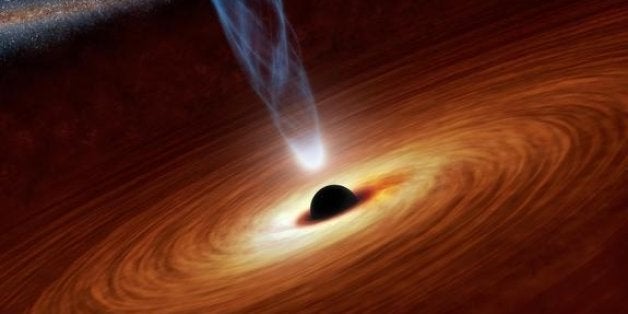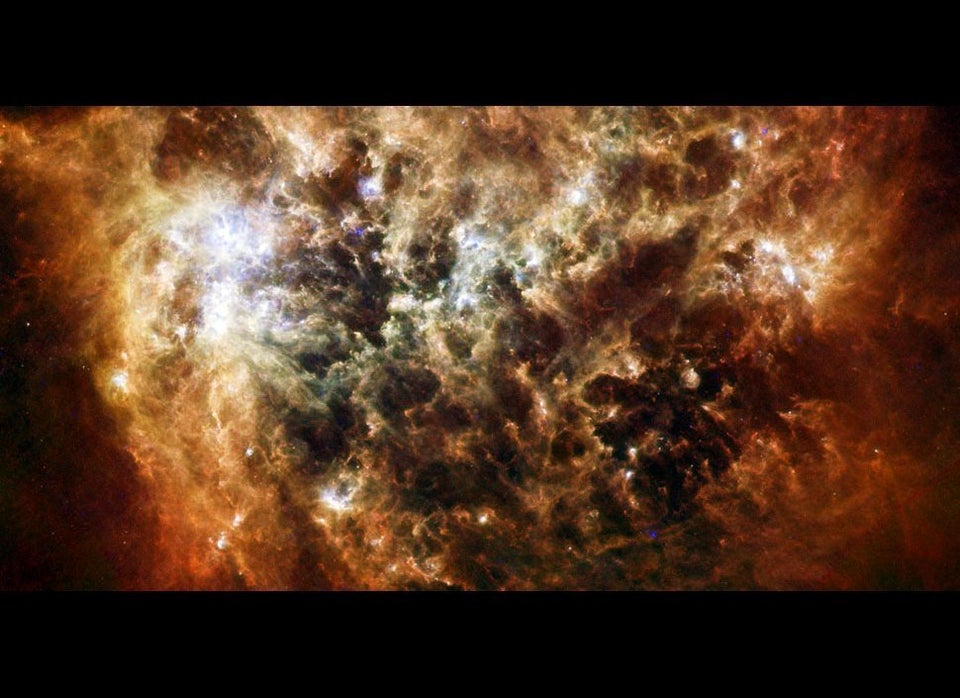
A NASA spacecraft has spotted strange light shifts near the heart of a supermassive black hole that could help scientists better understand the inner workings of these monstrous objects.
The agency's Nuclear Spectroscopic Telescope Arrayprobe, or NuSTAR, looked on as a mysterious X-ray source, called a corona, moved closer to a supermassive black hole. The black hole's immense gravity pulled harder on the corona the closer it came, stretching and blurring the X-ray light in the process, researchers said.
"The corona recently collapsed in toward the black hole, with the result that the black hole's intense gravity pulled all the light down onto its surrounding disk, where material is spiraling inward," study lead author Michael Parker, of the Institute of Astronomy in Cambridge, England, said in a statement. [Images: Black Holes of the Universe]
NuSTAR's observations provide the most detailed look yet at such events, researchers said.
While light cannot escape once it passes the "event horizon" of a black hole, high-energy emissions do stream from the vicinity of these objects — from the corona, for example, and from the superhot disk of material spiraling into a black hole's maw.
Astronomers think supermassive black holes — which can contain millions or billions of times the mass of the sun — reside at the cores of most, if not all, galaxies. The black hole observed by NuSTAR, called Markarian 335 (Mrk 335), is 10 million times more massive than the sun and lies 324 million light-years away, researchers said.
NASA's Swift satellite recently observed a change in Mrk 335's X-ray brightness, so scientists pointed NuSTAR at the supermassive black hole to take a closer look.
NuSTAR's observations revealed that the black hole's gravity pulled the coronal X-ray light onto the inner regions of Mrk 335's accretion disk. Further study has shown that the corona remains close to the black hole, months after it originally moved inward. (This inward migration was rapid, occuring over a period of days rather than weeks or months, researchers said.)
The new study could shed light on the nature of black hole coronas and the extreme conditions near the cores of supermassive black holes, NASA officials said.
"We still don't understand exactly how the corona is produced or why it changes its shape, but we see it lighting up material around the black hole, enabling us to study the regions so close in that effects described by Einstein's theory of general relativity become prominent," said co-author and NuSTAR principal investigator Fiona Harrison, of the California Institute of Technology in Pasadena.
"NuSTAR's unprecedented capability for observing this and similar events allows us to study the most extreme light-bending effects of general relativity," she added.
The new study was published last month in the Monthly Notices of the Royal Astronomical Society.
Follow Mike Wall on Twitter @michaeldwall and Google+. Follow us @Spacedotcom, Facebook or Google+. Originally published on Space.com.
